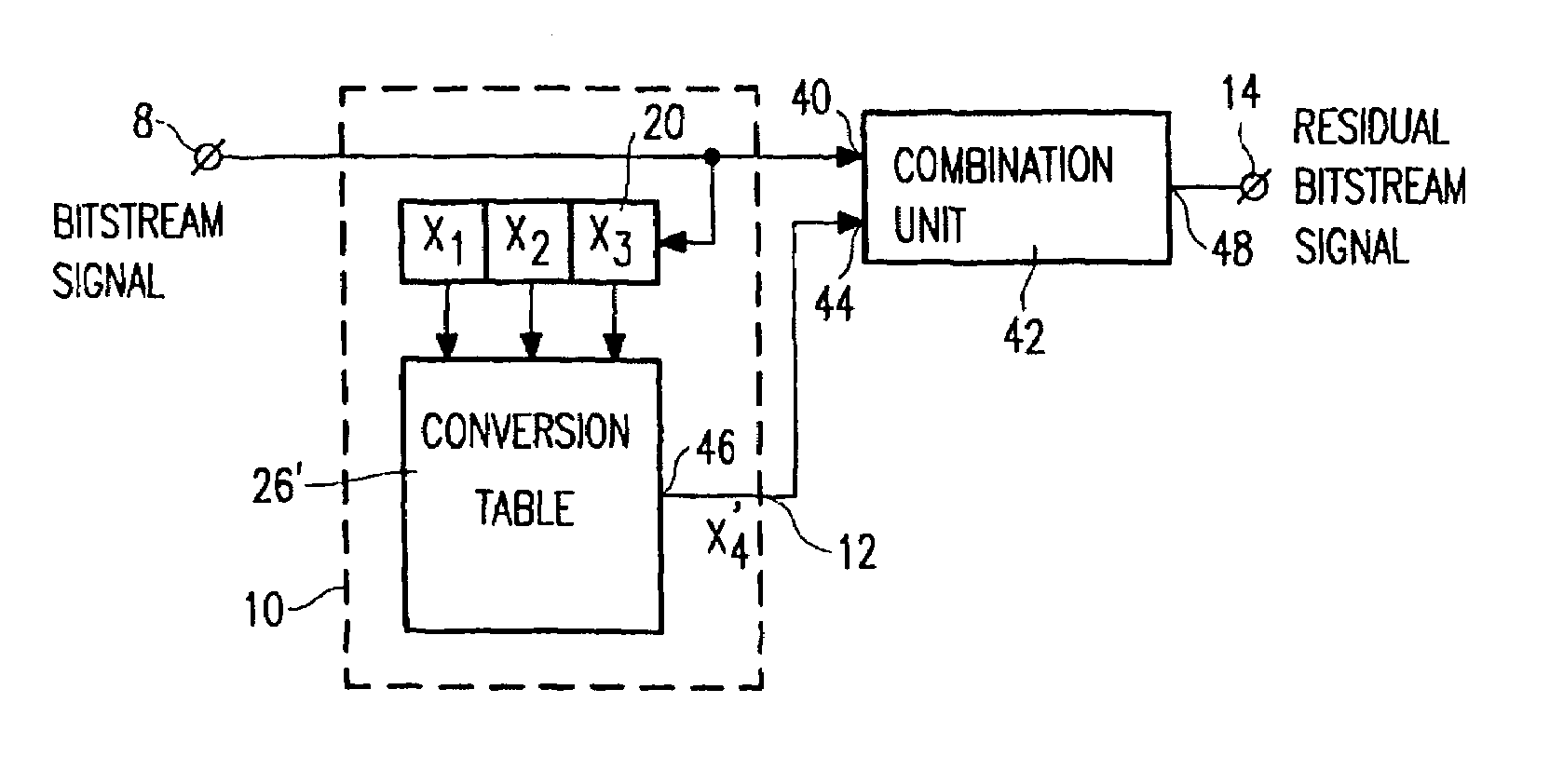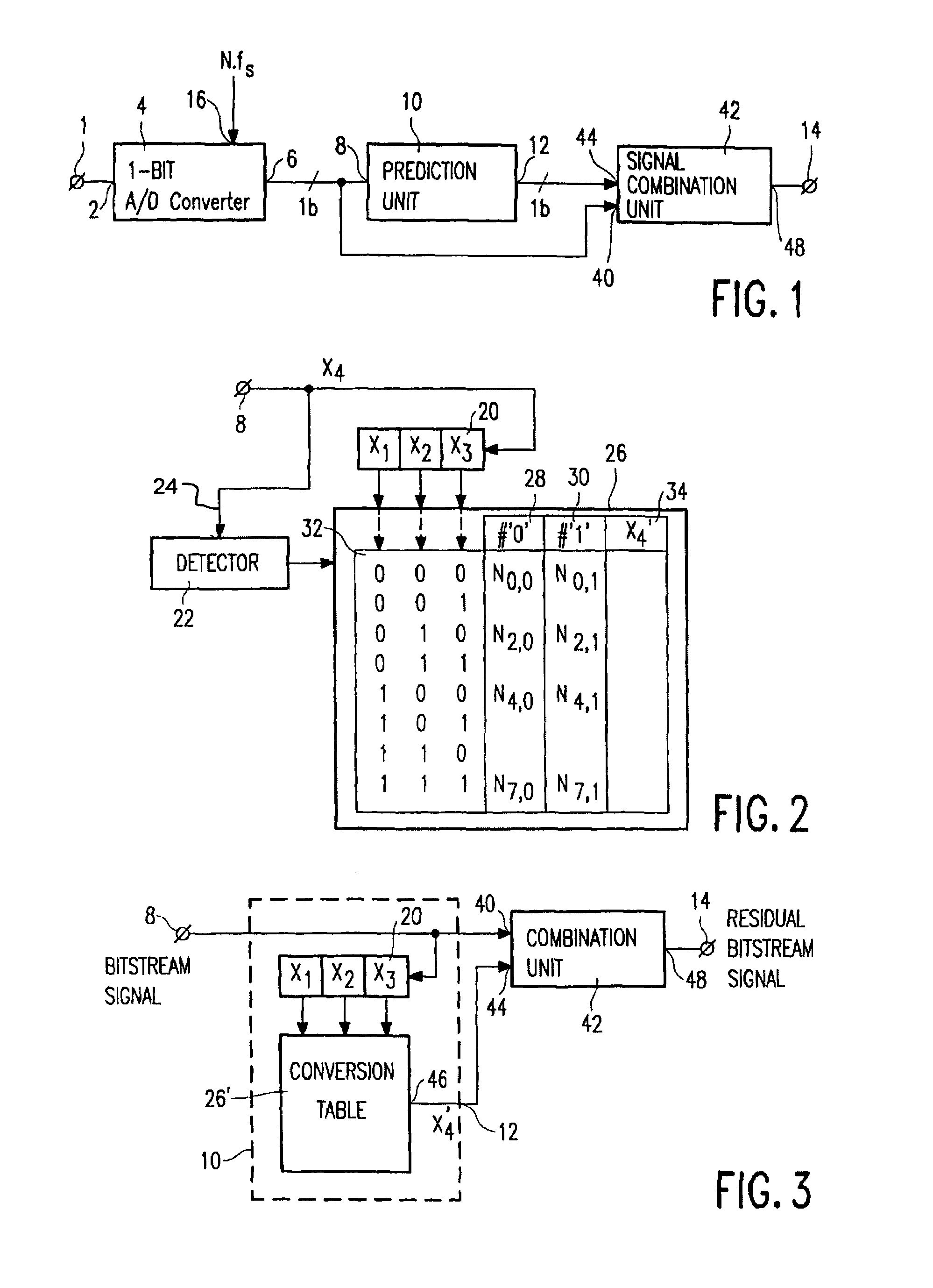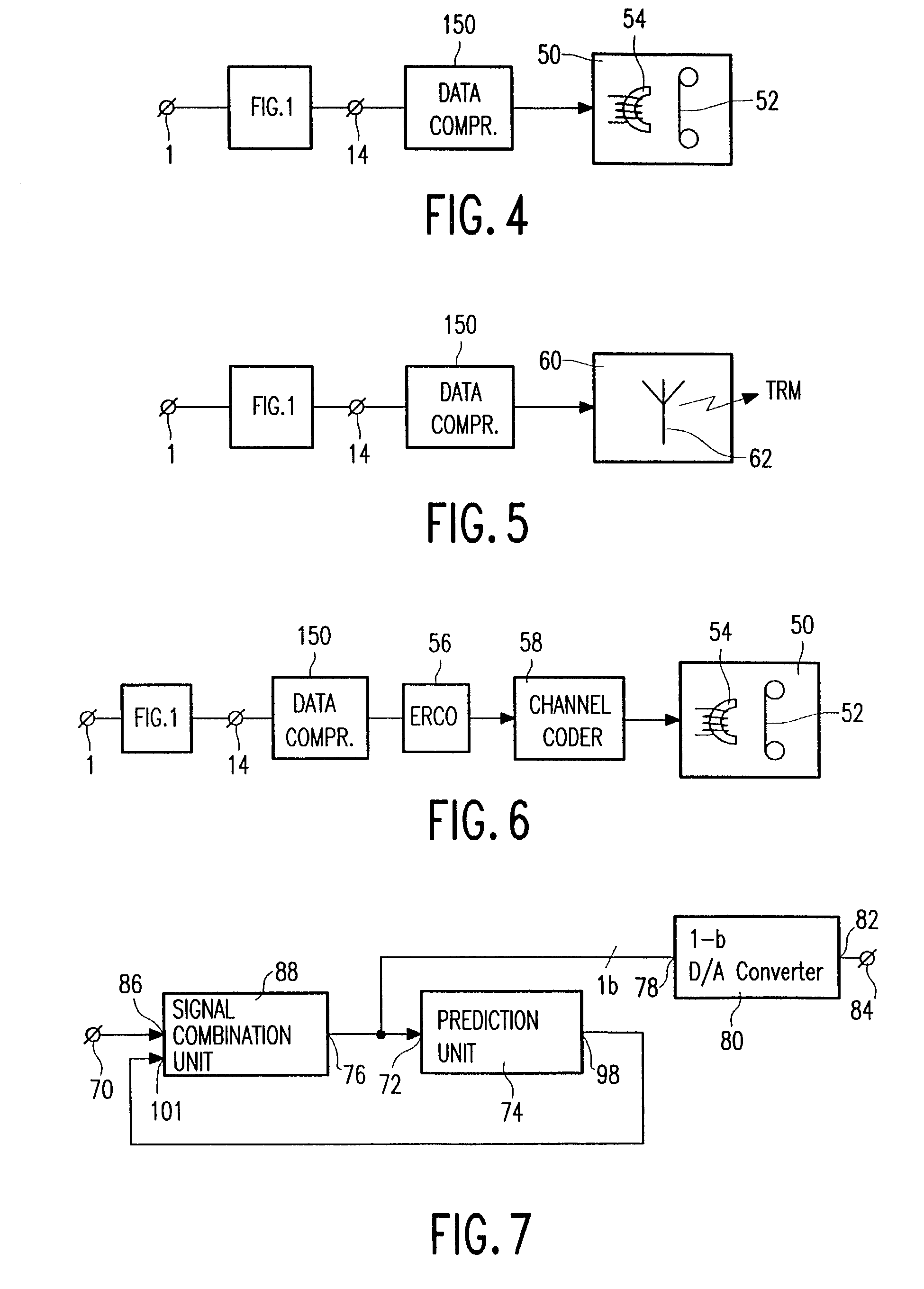Bitstream data reduction coding by applying prediction
a bitstream and data reduction technology, applied in the field of data processing apparatus for audio signals, can solve the problems of occupying a considerable amount of bitstream signals, and achieve the effect of increasing lossless compression performan
- Summary
- Abstract
- Description
- Claims
- Application Information
AI Technical Summary
Benefits of technology
Problems solved by technology
Method used
Image
Examples
Embodiment Construction
[0040]FIG. 1 shows an embodiment of the data processing apparatus in accordance with the invention, comprising an input terminal 1 for receiving the audio signal. In the present example, the audio signal is an analog audio signal. The input terminal 1 is coupled to an input 2 of a 1-bit A / D converter 4, also called a sigma-delta modulator. An output 6 of the 1-bit A / D converter 4 is coupled to an input 8 of a prediction unit 10, as well as to a first input 40 of a signal combination unit 42. An output 12 of the prediction unit 10 is coupled to a second input 44 of the signal combination unit 42, an output 48 of which is coupled to an output terminal 14.
[0041]The 1-bit A / D converter 4 carries out a 1-bit A / D conversion on the audio signal to form a bitstream signal which is supplied to the output 6. To that end, the A / D converter 4 receives a sampling frequency equal to N·fs via an input 16. fs is a frequency equal to, e.g., 32 kHz, 44.1 kHz or 48 kHz, and N is a large number, such a...
PUM
| Property | Measurement | Unit |
|---|---|---|
| frequency | aaaaa | aaaaa |
| frequency | aaaaa | aaaaa |
| frequency | aaaaa | aaaaa |
Abstract
Description
Claims
Application Information
 Login to View More
Login to View More - R&D
- Intellectual Property
- Life Sciences
- Materials
- Tech Scout
- Unparalleled Data Quality
- Higher Quality Content
- 60% Fewer Hallucinations
Browse by: Latest US Patents, China's latest patents, Technical Efficacy Thesaurus, Application Domain, Technology Topic, Popular Technical Reports.
© 2025 PatSnap. All rights reserved.Legal|Privacy policy|Modern Slavery Act Transparency Statement|Sitemap|About US| Contact US: help@patsnap.com



